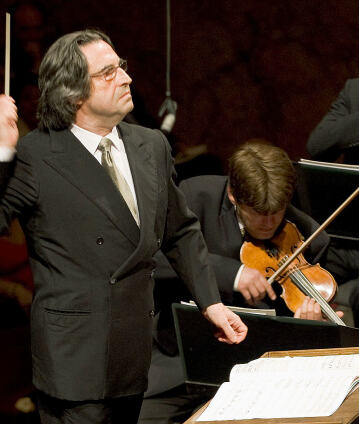Europakonzert 2009 à Naples avec Riccardo Muti

Le 1er mai 2009, après une pause de 17 ans, Riccardo Muti est remonté au pupitre de chef des Berliner Philharmoniker pour diriger l’Europakonzert dans le cadre somptueux du Teatro di San Carlo fraîchement rénové de Naples. Outre la Grande Symphonie en ut majeur de Schubert et une ouverture de Verdi, le programme comprenait une rareté trop rarement présentée en concert : le cycle de mélodies La canzone dei ricordi de Giuseppe Martucci.
Berliner Philharmoniker
Riccardo Muti
Violeta Urmana
© 2009 EuroArts Music International
Catégories
Artistes
Nos suggestions
- Europakonzert 2025 à Bari avec Riccardo Muti
- Europakonzert 1998 à Stockholm : Claudio Abbado dirige des œuvres sur le thème de la mer
- Europakonzert 2008 à Moscou avec Simon Rattle et Vadim Repin
- Claudio Abbado dirige la Neuvième de Beethoven lors de l’Europakonzert 2000 à Berlin
- Europakonzert à Athènes avec Simon Rattle et Daniel Barenboim
- Europakonzert 2003 à Lisbonne avec Pierre Boulez et Maria João Pires